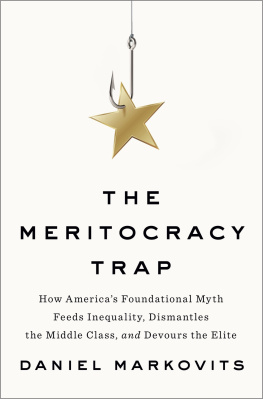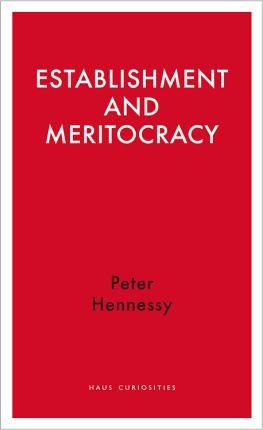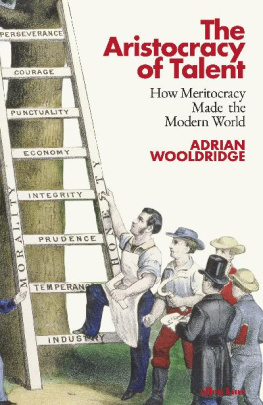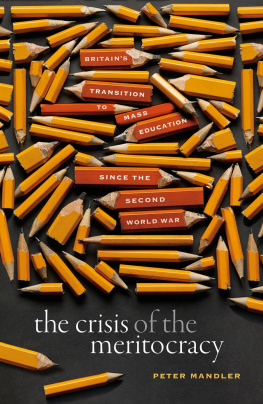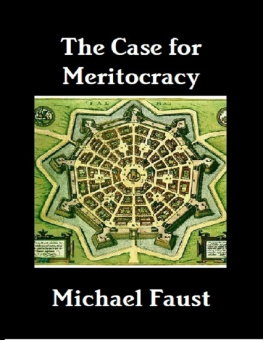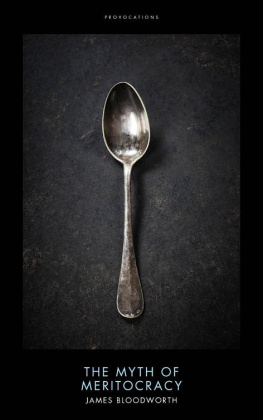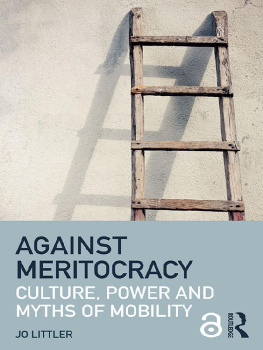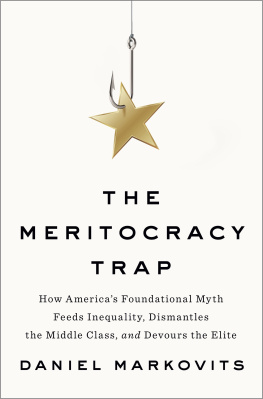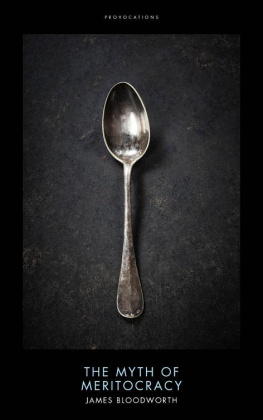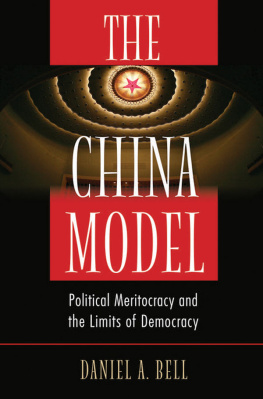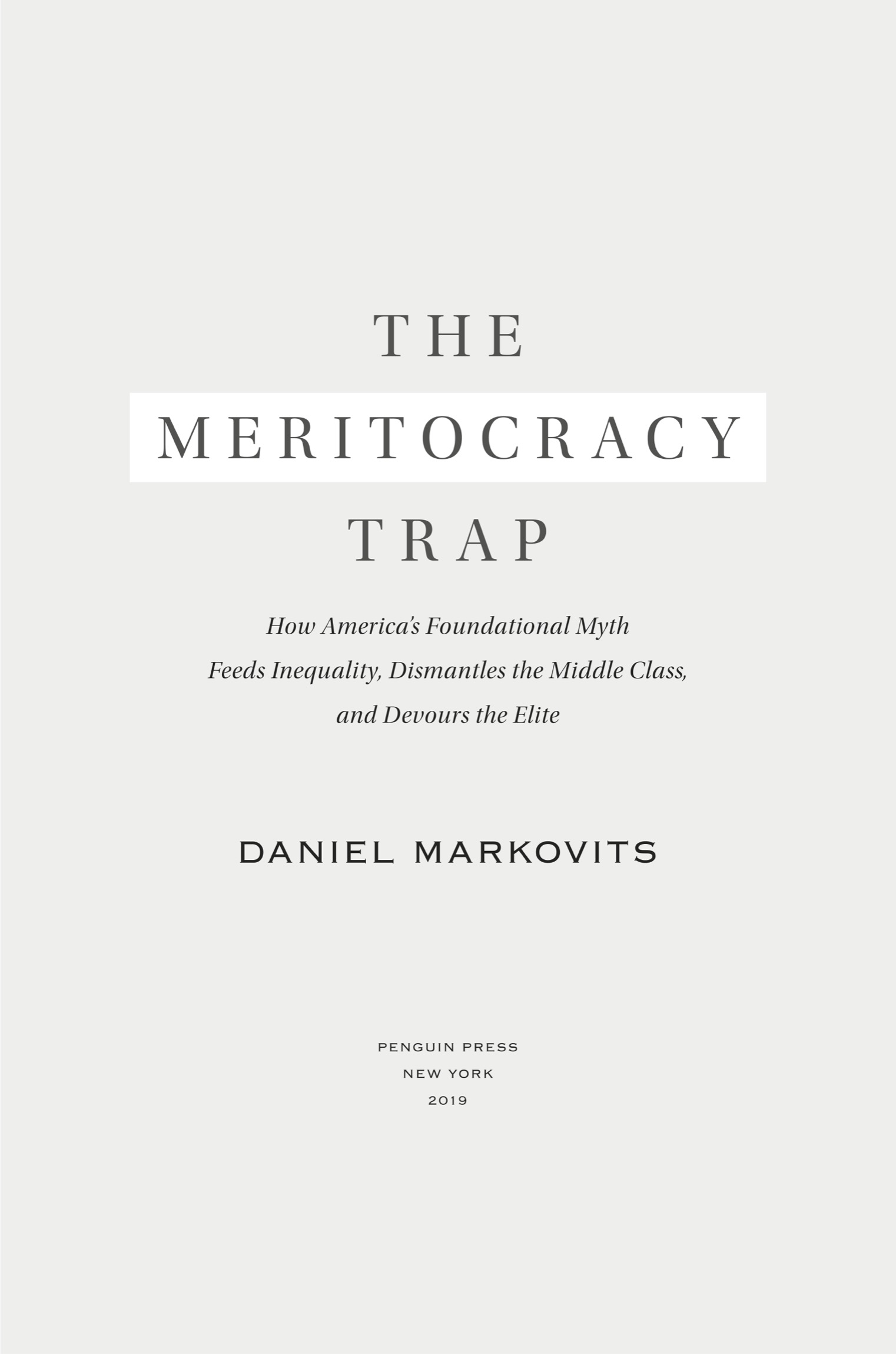PENGUIN PRESS
An imprint of Penguin Random House LLC
penguinrandomhouse.com
Copyright 2019 by Daniel Markovits
Penguin supports copyright. Copyright fuels creativity, encourages diverse voices, promotes free speech, and creates a vibrant culture. Thank you for buying an authorized edition of this book and for complying with copyright laws by not reproducing, scanning, or distributing any part of it in any form without permission. You are supporting writers and allowing Penguin to continue to publish books for every reader.
Figure 6 from Reardon, Sean F. 2011. Figures 5.7 and 5.8. The Widening Academic Achievement Gap Between the Rich and the Poor: New Evidence and Possible Explanations, from Whither Opportunity, edited by Duncan, Greg, and Murnane, Richard. Russell Sage Foundation. Reprinted with permission of Russell Sage Foundation, 112 East 64 Street, New York, NY 10065.
LIBRARY OF CONGRESS CATALOGING-I N-PUBLICATION DATA
Names: Markovits, Daniel, 1969 author.
Title: The meritocracy trap : how Americas foundational myth feeds inequality, dismantles the middle class, and devours the elite / Daniel Markovits.
Description: New York : Penguin Press, 2019. | Includes bibliographical references and index.
Identifiers: LCCN 2019007519 (print) | LCCN 2019017772 (ebook) | ISBN 9780735222007 (ebook) | ISBN 9780735221994 (hardcover)
Subjects: LCSH: Middle classUnited States. | IntellectualsUnited States. | EqualityUnited States.
Classification: LCC HT684 (ebook) | LCC HT684 .M33 2019 (print) | DDC 305.5/50973dc23
LC record available at https://lccn.loc.gov/2019007519
While the author has made every effort to provide accurate internet addresses and other contact information at the time of publication, neither the publisher nor the author assumes any responsibility for errors or for changes that occur after publication. Further, the publisher does not have any control over and does not assume any responsibility for author or third-party websites or their content.
Cover design: Darren Haggar
Cover images: (hook) MicroStockHub / Getty Images Plus; (star) shaneillustration / Getty Images
Version_2
For Sarah
and
our children
CONTENTS
INTRODUCTION
Merit is a sham.
An entire civilization resists this conclusion. Every decent person agrees that advantage should be earned through ability and effort rather than inherited alongside caste. The meritocratic idealthat social and economic rewards should track achievement rather than breedinganchors the self-image of the age. Aristocracy has had its day, and meritocracy is now a basic tenet of civil religion in all advanced societies.
Meritocracy promises to promote equality and opportunity by opening a previously hereditary elite to outsiders, armed with nothing save their own talents and ambitions. It further promises to harmonize private advantage and public interest, by insisting that wealth and status must be earned through accomplishment. Together, these ideals aspire to unite all of society behind a shared vision of hard work, skill, and deserved reward.
But meritocracy no longer operates as promised. Today, middle-class children lose out to rich children at school, and middle-class adults lose out to elite graduates at work. Meritocracy blocks the middle class from opportunity. Then it blames those who lose a competition for income and status that, even when everyone plays by the rules, only the rich can win.
Meritocracy harms the elite as well. Meritocratic schooling requires rich parents to invest thousands of hours and millions of dollars to get elite educations for their children. And meritocratic jobs require elite adults to work with grinding intensity, ruthlessly exploiting their educations in order to extract a return from these investments. Meritocracy entices an anxious and inauthentic elite into a pitiless, lifelong contest to secure income and status through its own excessive industry.
Finally, meritocracy now divides the elite from the middle class. It drives the middle class to resent the establishment and seduces the elite to cling to the corrupt prerogatives of caste. Meritocracy ensnares the society that both classes must share in a maelstrom of recrimination, disrespect, and dysfunction.
Meritocracys charisma disguises all these harms, making it difficult to acceptindeed, seriously to considerthat meritocracy itself lies behind them. Even the angriest critics of the age embrace the meritocratic ideal. They charge that corrupt elites only pretend to reward achievement but actually favor their own. By indicting individual bad actors for failing to honor a meritocratic ideal in practice, they reaffirm meritocracy in principle.
But in fact, social and economic structures, rather than personal vices, cause the disaffection and discord that increasingly overwhelm American life. Whatever its original purposes and early triumphs, meritocracy now concentrates advantage and sustains toxic inequalities. And the taproot of all these troubles is not too little but rather too much meritocracy.
Merit itself has become a counterfeit virtue, a false idol. And meritocracyformerly benevolent and justhas become what it was invented to combat. A mechanism for the concentration and dynastic transmission of wealth and privilege across generations. A caste order that breeds rancor and division. A new aristocracy, even.
MERITOCRACYS FALSE PROMISES
I am a meritocrat: a product and now an agent of the constellation of forces that these pages lay bare.
In the summer of 1987, as meritocracy gathered steam, I graduated from a public high school in Austin, Texas, and headed northeast, to attend Yale College. I then spent nearly fifteen years studying at various universitiesthe London School of Economics, the University of Oxford, Harvard University, and finally Yale Law Schoolpicking up a string of degrees along the way.
Today, I teach at Yale Law School, where my students unnervingly resemble my younger self: they are, overwhelmingly, products of professional parents and high-class universities. I pass on to them the advantages that my own teachers earlier bestowed on me. In all these ways, I owe my prosperity and my caste to elite institutions and to the training and employment that they confer.
Now at full flourish, meritocracy flies its flag conspicuously over the institutions that collectively ordain the elite. Harvard University, for example, calls itself a haven for the worlds most ambitious scholars, and Harvards mission statement adds that its purpose is not simply academic excellence but also to educate the citizens and citizen-leaders for our society, so that they might learn how they can best serve the world. The firms that dominate employment among graduates of Harvard and other top schools carry the same arguments into the elites adult life. Goldman Sachs has been called probably the most elite work-society ever to be assembled on the globe, and the firms website advertises the progress that it promotes far outside the elite, for example by brokering investments that spark a renaissance in Newark, New Jersey, and a resurgence in New Orleans. This familiar scriptrepeated again and againsimultaneously trumpets the elites exceptional talents and reconciles hierarchy to the moral imperatives of democratic life, by connecting elites to the common interest as midwives to general prosperity.

